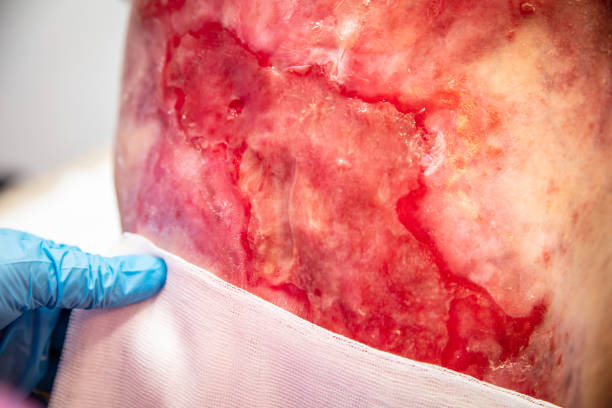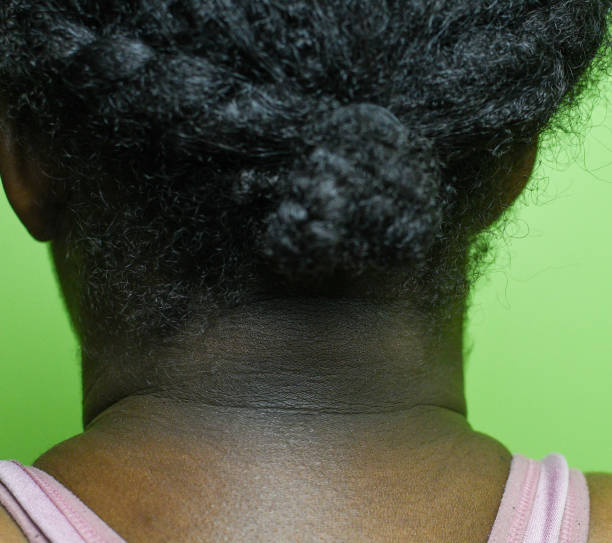Aplasia Cutis Congenita (ACC) is an unusual condition characterized by the absence of one or more skin layers at birth, affecting various body parts, with the scalp being the most common site (70% of cases). Whether occurring independently or in conjunction with malformation syndromes and other medical conditions, healthcare professionals must possess a comprehensive understanding of ACC, covering its causes, presentations, and management.
Pathogenesis and Etiology of Aplasia Cutis Congenita (ACC)
Transitioning into the roots of ACC, the exact cause remains elusive, likely involving a blend of factors. Disruptions in skin development during the second trimester of embryogenesis are believed to be key players. Intrinsic causes, such as genetic mutations or chromosomal abnormalities, and extrinsic factors like infections, medications, or vascular issues, can trigger the condition. The identification of the genetic basis stands as a critical factor for prognosis and family counseling.
Clinical Presentation of Aplasia Cutis Congenita (ACC)
Moving on to the clinical aspect, ACC presents with distinct non-inflammatory skin lesions at birth, exhibiting variations based on the depth of affected skin layers.
- Epidermal involvement: Shallow lesions with a thin, transparent membrane, akin to cellophane, often resulting in scarring and hair loss.
- Dermal involvement: Transitioning into deeper lesions that expose subcutaneous tissue or underlying structures, heightening the risk of infection and complications.
- Generalized presentation: Widespread cases showcase broad areas of absent skin, frequently accompanied by irregularities in underlying structures and internal organ abnormalities.
Associated Malformations and Syndromes:
Expanding our view to associated malformations and syndromes, while ACC may stand alone, it frequently intertwines with other congenital anomalies:
- Adams-Oliver syndrome: Presents with ACC alongside cutis laxa, skeletal defects, and gastrointestinal anomalies.
- EEC syndrome: Encompasses ectodermal dysplasia, enteric malformations, and cleft lip/palate, occasionally featuring ACC.
- Terreny syndrome: Weaves together congenital ichthyosis, ACC, limb defects, and neonatal respiratory distress.
- Trisomy 13: A chromosomal abnormality entwined with multiple malformations, including ACC, often situated on the scalp.
Diagnosis and Management Aplasia Cutis Congenita (ACC)
Transitioning to the diagnostic and management phase, ACC diagnosis primarily relies on clinical observation, complemented by additional tests like skin biopsies, imaging studies, and genetic testing.
- Local care: Emphasizing the importance of gentle wound care to prevent infection and facilitate healing.
- Supportive care: Addressing fluid balance, nutrition, and pain management remains crucial for overall well-being.
- Surgical intervention: Contemplating repair for large or deep defects, employing methods such as skin grafting, flap reconstruction, or tissue expanders based on the specific scenario.
- Genetic counseling: Underlining the significance of genetic counseling for family planning and risk assessment if a genetic cause is identified.
Prognosis and Long-Term Management:
Transitioning into the prognosis and long-term management aspect, the outlook varies depending on lesion severity and associated conditions. Superficial cases typically heal well with minimal scarring, while more extensive defects or syndromic presentations may pose challenges. Continuous multidisciplinary follow-up is imperative for addressing needs, managing complications, and providing holistic care.
Conclusion:
In conclusion, Aplasia Cutis Congenita unfolds as a complex condition with diverse implications. Recognizing its features, understanding potential causes, and applying appropriate management strategies are paramount for optimizing outcomes. Through a comprehensive, multidisciplinary approach, individuals with ACC can navigate fulfilling lives despite the challenges they may encounter.

